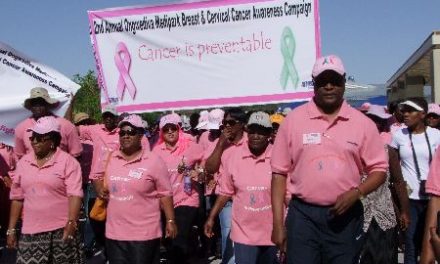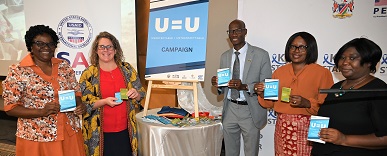
Disturbing teen pregnancy figures revealed – More than 15,000 cases recorded per year

For the 2020/2021 and 2021/2022 financial years, teenage pregnancies stood at 14.54% and 14.95% respectively nationally, translating to more than 15,000 pregnancies among teenagers per year, an official said Thursday.
This was highlighted by the Minister of Health and Social Services, Dr. Kalumbi Shangula at the handover ceremony in Windhoek of donated contraceptives and reproductive health kits courtesy of the United Nations Population Fund.
During 2020/2021 the regions with the highest ratio of teenage pregnancies are Kavango West (24.3%), Kunene (22.4%), and Kavango East (21.1%), while the lowest are Khomas (7.76%), Erongo (8.78%) and Oshana (9.6%), he said.
For the 2021/2022 financial year, the regions with the highest pregnancy ratio are Kavango West (23.9%), Kunene (22.9%), and Kavango East (21.1%), while the lowest are Khomas (7.4%), Erongo (8.9%) and Karas (9.8%).
“Teenage pregnancies have a tremendous impact on the lives of the affected young women. Not only do unplanned pregnancies disrupt the education trajectory of these young people, but it may also give rise to other negative results such as infection with Sexually Transmitted Infections,” Shangula said.
There is also a risk of injuries during birth as the bodies of underage girls, may not be fully developed, he said, adding that many young women, after falling pregnant, suffer depression and may develop other health-related complications, such as miscarriages.
“Too often, many young people who fall pregnant end up attempting unsafe and illegal termination of
pregnancies, resulting in injuries and even death. At society and national levels, maternal mortality rates may soar, for example, for young girls who have not developed enough to carry a pregnancy safely to term or for women with underlying medical conditions,” he noted.
According to Shangula, it is for this reason that there is a need to ensure that safe and reliable contraceptives are easily accessible, affordable, and available in a wide range of forms acceptable to all those who need them in all parts of the country.
“For those who receive contraceptive services from the state, the products are available free of charge. Again, we say no one should be left out. The availability of safe contraceptives has many benefits. Contraceptives prevent unwanted pregnancies. Condoms, which are a form of contraception, not only prevent pregnancies. They also protect against Sexually Transmitted Infections. The importance of safe contraceptives can therefore not be over-emphasized,” he said.
Meanwhile, he said the ministry endeavours to make contraceptive commodities available at all public health facilities free of charge.
In addition to that, it is important to ensure that counselling services are available, including at school in conjunction with the Ministry of Education, Arts and Culture, through the School Health Programme, he concluded.













































